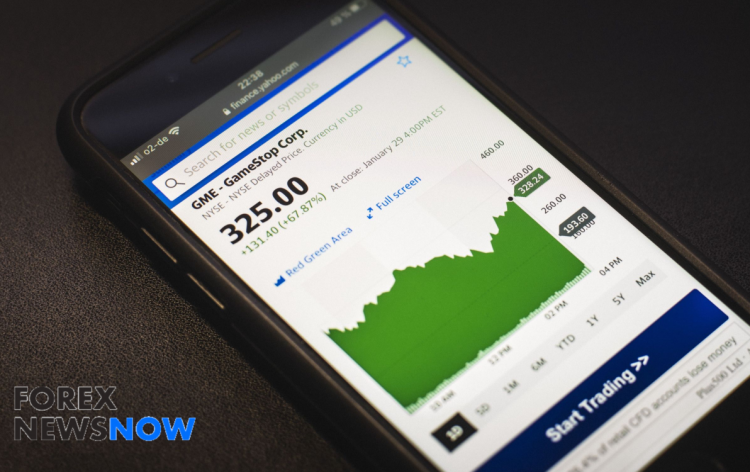Financial Landscape Unveiled: US Indices and Chinese Equities in Flux

In the intricate web of global financial dynamics, recent times have witnessed contrasting patterns in the pursuits of stability. As the US indices, particularly the Nasdaq 100, endeavor to regain equilibrium following periods of volatility, the focus shifts to their East Asian counterparts.
Notably, China’s loan prime rates adjustments, while executed with intent, have yielded more measured responses, exemplified by the Hang Seng Index. Amidst these oscillations, the role of the US dollar emerges as a unifying thread, exerting its influence on both fronts. This article delves into the intriguing interplay between these factors, underscoring the nuanced interdependencies shaping the contemporary financial landscape.
Market Analysis: US Indices Stabilize Amid Volatility, Chinese Equities Grapple with Challenges
Major US stock indices exhibited subdued performance by the end of the previous week, with the Dow Jones Industrial Average (DJIA) inching up by 0.07%, the S&P 500 experiencing a marginal dip of 0.01%, and the Nasdaq dropping by 0.20%. These movements, however, marked a notable attempt at stabilization following three consecutive days of substantial losses. Meanwhile, the VIX, often viewed as a gauge of market caution, reached its highest point in nearly three months. Encouragingly, the VIX’s gains experienced a significant pullback on Friday, offering a measure of reassurance in the short term.
The upcoming week will closely monitor developments in US Treasury yields, pivotal in guiding risk sentiment. While the two-year yields remained trapped in consolidation over the past week, the 10-year and 30-year yields hovered just below their peak from October 2022. Should a fresh surge drive yields to new multi-year highs, it could reinforce a sustained high-rate outlook, potentially intensifying the sell-off pressure on risk assets. Conversely, a downturn in bond yields might provide brief relief. Presently, all three major US indices linger below their respective 50-day moving averages (MAs).
The Nasdaq 100 index holds particular intrigue, testing a support confluence near the 14,600 level. This zone aligns with a 23.6% Fibonacci retracement drawn from the October 2022 bottom to the recent peak in July 2023, further coinciding with an Ichimoku cloud support area on the daily chart. A breach of the 14,600 level this week might pave the way for a retest of the 14,200 level. In Asia, a mixed opening appears likely: the Nikkei is up by 0.55%, ASX down by 0.26%, and KOSPI gains 0.66% at the time of writing.
Chinese equities continue to face challenges, with the Nasdaq Golden Dragon China Index experiencing a 3.5% drop last Friday, despite Wall Street’s relatively muted performance. The Hang Seng Index hit a new year-to-date low, as authorities’ responses to risks in the property sector fell short of expectations. The People’s Bank of China (PBoC) and financial regulators advocated increased lending, yet whether this will stimulate substantial demand remains uncertain.
After an unexpected 15 basis-point cut to its one-year medium-term lending facility (MLF) rate, anticipation for similar cuts to the one-year and five-year loan prime rates led to disappointment. The one-year loan prime rate underwent a 10 bp reduction to 3.45%, while the five-year rate, influencing home mortgage pricing, remained unaltered. The modest response has tempered sentiments in Chinese equities, potentially prolonging property sector concerns and a low-growth narrative.
The Hang Seng Index maintains a bearish trajectory, with last week witnessing the breach of a 23.6% Fibonacci retracement level, possibly signaling focus on the 16,900 level. Notably, renewed bullish momentum might necessitate a breach of the Ichimoku cloud resistance on the weekly chart, positioned around the psychologically significant 20,000 level. Parallelly, the US dollar consolidates near a crucial resistance at 103.12, previously unbroken in June and July. The relative strength index (RSI) on the weekly chart hovers around the pivotal 50 level, unbreached since November of the prior year. Inability to exceed this threshold could empower sellers, sustaining the overarching downtrend. Conversely, a dollar retreat might spotlight the 102.30 level, while surmounting 103.12 resistance might set the stage for revisiting the 105.00 level.
How This Will Impact Your Trading Experience?
The intricate dynamics of the financial landscape described in the preceding article will inevitably have a profound impact on the trading experiences of investors and traders across the globe. These market movements can translate into substantial gains or losses, shaping trading strategies and risk management approaches.
For instance, the attempt by major US indices to stabilize after a period of volatility can instill both hope and caution among traders. Those who had taken short positions during the indices’ decline might consider taking profits as signs of stability emerge. Conversely, traders seeking long positions might approach the situation with cautious optimism, assessing whether the indices can break through their 50-day moving averages, a significant technical level. Such decisions would hinge on their risk appetite and assessment of prevailing market sentiment.
The movement of US Treasury yields will significantly influence risk sentiment. If yields surge to new multi-year highs, traders might brace for a potential sell-off in risk assets like equities, opting for safer havens like bonds. On the contrary, a downturn in bond yields could drive a relief rally in equities, enticing traders to re-enter the market.
In the case of Chinese equities, the Hang Seng Index’s struggles amid property sector risks would impact traders’ decisions. Those who had maintained bullish positions might reevaluate their strategies as the index breaches technical support levels. On the other hand, traders with bearish outlooks could seek opportunities to capitalize on further downward momentum.
Moreover, the fluctuation in the US dollar against key resistance levels would resonate with forex traders. If the dollar surpasses the resistance at 103.12, traders who anticipate a potential upward trend might execute long positions. Conversely, failure to breach this level could bolster the conviction of traders who expect a continued dollar decline, leading to increased short positions.
Ultimately, the market’s response to these intricate dynamics will require traders to make well-informed decisions, leveraging technical analysis, fundamental insights, and risk management strategies. The interplay of factors like indices stabilization, Treasury yields, Chinese equities, and the US dollar’s movements will provide both challenges and opportunities, reshaping trading experiences and outcomes for traders worldwide.



























Comments (0 comment(s))